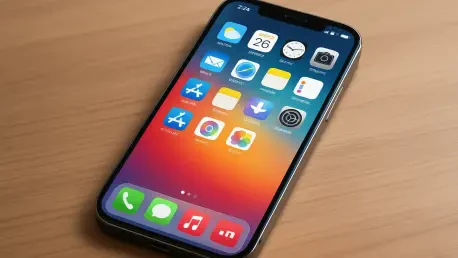Apple’s latest operating system update is generating significant buzz among iPhone users worldwide, as the tech giant prepares to roll out a transformative software experience with iOS 26. Announced during the Worldwide Developers Conference (WWDC) earlier this year, this update promises to bring a host of innovative features and enhancements designed to elevate the functionality of compatible devices. With the general release just days away, anticipation is building for what could be one of the most impactful updates in recent memory. This major leap from iOS 18 to iOS 26 reflects Apple’s new naming convention, aligning the OS version with the year it will dominate usage. As excitement mounts, many users are eager to understand the specifics of when this update will be available, which devices will support it, and how to ensure a smooth installation process. This article aims to provide a comprehensive guide to navigating the rollout of this cutting-edge software update.
1. Release Timeline for iOS 26
The official release date for iOS 26 has been confirmed as Monday, September 15, marking a significant milestone for iPhone users eager to explore the latest features. Apple first unveiled this update during WWDC in June, with a developer beta made available shortly after to allow early testing by professionals in the field. Following this, a public beta was released in July, giving a broader audience the chance to experience the new system before its full launch. For most users, the update will be accessible as a free download starting on the specified date, although availability might vary based on factors such as region, carrier policies, and local regulations. This staggered approach ensures that the rollout is managed effectively, minimizing potential server overloads and providing a seamless experience for the majority of users. Keeping an eye on official announcements from Apple can help clarify any regional discrepancies in timing.
Understanding the phased release strategy of iOS 26 is crucial for users planning to upgrade on day one. After the initial launch, Apple typically continues to refine the software with minor updates and feature rollouts throughout the following year, ensuring that the system remains optimized for performance and security. This means that even after September 15, additional enhancements may become available through 2026 as part of the ongoing support for this version. Users should note that while the developer and public betas have already provided a glimpse into the capabilities of the new OS, the general release is expected to be the most stable version for everyday use. Preparing devices in advance by checking storage space and ensuring a reliable internet connection can help facilitate a smooth transition. Staying informed about any last-minute changes to the release schedule via Apple’s official channels is also advisable to avoid any unexpected delays.
2. Compatible Devices for the New Update
When it comes to compatibility, iOS 26 supports a wide range of iPhone models, though some older devices have been excluded from the list. Apple has confirmed that any iPhone 11 or newer will be able to run this latest operating system, which includes the popular iPhone SE models as well. However, users with iPhone XR and XS will find their devices no longer supported, marking the end of updates for these models. This decision reflects Apple’s focus on ensuring optimal performance on hardware that can handle the advanced features of the new software. For those unsure about their device’s eligibility, checking the model number in the settings menu can provide clarity on whether an upgrade is possible. This compatibility update ensures that a significant portion of iPhone users can benefit from the latest technological advancements.
For users with compatible devices, the transition to iOS 26 offers an opportunity to experience a host of new functionalities tailored to modern hardware capabilities. Apple’s strategy of phasing out support for older models is often driven by the need to maintain a high standard of user experience, as newer software demands more processing power and memory. Those with unsupported devices may need to consider upgrading their hardware to access the latest features and security updates. It’s also worth noting that compatibility extends beyond just the device model to include ensuring that the iPhone is running a recent enough version of the current OS to facilitate the update process. Apple provides detailed resources on its website for users to verify compatibility and prepare their devices, ensuring that the shift to the new system is as seamless as possible for the majority of the user base.
3. Steps to Install the Public Beta Version
For those who can’t wait until the official release, installing the iOS 26 public beta offers a chance to test the software ahead of time. To begin, navigate to the Settings app on the iPhone, select General, and then tap on Software Update. Within this menu, users must enable Beta Updates, a setting that is turned off by default, and choose the iOS 26 Public Beta option to start receiving automatic updates. Once this is set up, return to the Software Update page, where the device will prompt for a download if a beta version is available. This process allows users to explore new features and provide feedback, though it comes with the caveat of potential bugs and glitches. Ensuring a stable internet connection during the download and installation is critical to avoid interruptions that could affect the device’s performance.
Beyond the public beta, the developer beta is another option for those enrolled in the Apple Developer Program, though it requires additional steps. To access this version, users must ensure their device is running at least iOS 16.5 and is linked to an Apple ID registered with the program. In Settings, under General and Software Update, select Beta Updates and choose the iOS 26 Developer Beta. If the option isn’t visible, enabling Developer Mode under Privacy & Security in Settings may be necessary. While an annual membership costing $99 is typically required for full program access, trying the developer beta doesn’t always necessitate joining. Before proceeding with either beta, backing up all personal data is highly recommended to safeguard against potential data loss due to software instability. Testing beta versions on a secondary device rather than a primary one is also a prudent approach to minimize risks.
4. Preparing for a Smooth Installation
Before diving into the installation of iOS 26, whether through beta or the official release, taking preparatory steps can significantly enhance the experience. First, backing up the device is essential to protect personal data such as photos, contacts, and app information. This can be done via iCloud or by connecting the iPhone to a computer for a local backup. Additionally, ensuring that the device has sufficient storage space for the update is critical, as large OS files can require several gigabytes. Deleting unnecessary apps or files can free up space if needed. Users should also verify that their device is charged or plugged in during the process to prevent interruptions. These precautions help mitigate risks associated with software updates, especially for beta versions that may contain unresolved issues.
Another important consideration is the environment in which the update is performed. A stable and secure Wi-Fi connection is recommended over cellular data to ensure a faster and more reliable download. Users should avoid installing beta software on their primary device, as early versions are often prone to bugs that could disrupt daily usage. For those participating in the beta program, the built-in Feedback Assistant app provides a direct channel to report issues or suggest improvements to Apple, contributing to the refinement of the final release. Joining the Apple Beta program is a straightforward process for anyone interested in accessing the latest software before the general public. By taking these preparatory measures, users can approach the installation with confidence, knowing they’ve minimized potential setbacks and are ready to explore the new features.
5. Reflecting on the Rollout Journey
Looking back, the journey to the release of iOS 26 was marked by meticulous planning and phased testing that underscored Apple’s commitment to quality. From the initial reveal at WWDC to the developer and public beta phases, each step was carefully orchestrated to gather feedback and enhance the software’s stability. The confirmation of the September 15 launch date provided clarity for millions of users who had been eagerly awaiting the update. Compatibility decisions, while disappointing for some with older models, reflected a focus on delivering a consistent experience across supported devices. The availability of beta versions allowed early adopters to play a role in shaping the final product through their insights and reports.
Moving forward, users who installed iOS 26 can anticipate ongoing refinements through subsequent updates, addressing any lingering issues and introducing additional features. For those yet to upgrade, ensuring device readiness by following the outlined steps remains a priority to avoid complications. Exploring Apple’s official resources for detailed guides on installation and troubleshooting can further ease the transition. As the iPhone ecosystem continues to evolve, staying informed about future announcements will be key to maximizing the benefits of this innovative operating system.








